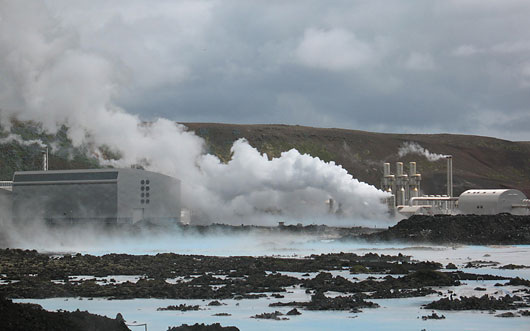
10. Colombia (EPI: 76.8)
Despite its relatively small size, Colombia is the second most biologically diverse country on earth, home to about 10 percent of the world’s species. This biodiversity results from Colombia's varied ecosystems—from the rich tropical rainforest to the coastal cloud forests to the open savannas. Recently, the Colombian government has taken steps to make the country more eco-friendly.
Colombia has created a rainforest reserve for the protection of medicinal plants. The Orito Ingi-Ande Medicinal Flora Sanctuary includes more than 26,000 acres of biologically rich tropical rainforest ranging in altitude from approximately 2,300 to 11,000 feet above sea level. Members of local indigenous communities combined their extensive knowledge of medicinal plants with cutting-edge technology to determine the placement and extent of the reserve.
Architects in Colombia have also begun to use bamboo, which is unique in that it is strong in both tension and compression, to build structures.
9. Cuba (78.1)
After centuries of neglect, environmental policy is now on a fast track in Cuba. The country is making efforts to reuse farmland, decrease the use of harmful pesticides, and ensure that salt from seawater doesn’t ruin the rich soil. Cuba has also decided to only use organic products on its farms.
A dispute involving road and bridge access to outlying keys for the development of tourism—areas that are prized and defended by ecologists—was resolved by requiring the use of “ecological bridges” that will allow for the free flow of water and aquatic organisms but will also facilitate the development of the keys.
In keeping with the priority given by the country to use alternative energy sources, Guamá, a territory crossed by more than 30 rivers that flow into the sea from the surrounding mountains, will have 17 hydroelectric power stations installed that will provide clean electricity to around 7,000 people living in isolated communities.
8. Austria (78.1)
Austria showed its green side to the world at the 2010 Winter Olympic Games, where it built a “passive house” in Whistler, British Columbia, to house the Austrian Olympic Committee and Austrian Public Broadcasting.
The structure, the first of its kind in Canada, is an ultra-low-energy building designed to showcase what is possible in terms of energy-efficient construction. A comfortable interior climate can be maintained without active heating and cooling systems. It uses little to no energy for heating and cooling, employing a combination of super insulation, thick walls and windows, solar retention, ground heat and other technologies.
Recently, Austria joined with the Czech Republic to plant eco-friendly gardens along the border between the two countries. There are an estimated 330,000 gardens in Austria, and 6,800 of them are natural and eco-friendly. There are no pesticides used to treat the gardens, they use natural compost, and they rely on rain for water.
7. France (78.2)
The French government has announced a huge investment package for renewable energy totaling $1.73 billion, to be invested over the next four years in cutting-edge technology projects including solar energy, marine energy, geothermal energy, carbon capture and storage, and advanced biofuels. France has traditionally put much of its clean energy money into nuclear energy (from which France now gets 80 percent of its electricity) and wind energy.
The government is reportedly looking into similar programs for green transport and smart-grid demonstrations. France seems to be trying to up its green credentials and diversify its green investments to remain a leader in addressing two major causes of global warming—power generation and transportation.
Also, French highway authorities are trying a new wind turbine to produce energy by using the air displaced when a truck speeds by. An experimental turbine vane fed by gusts of wind on the side of a highway between Paris and Lyon generates just 1.5 kilowatts of electricity, but it’s enough to power local road signs, speed detectors and video cameras.
6. Mauritius (80.6)
Mauritius, an island off the coast of Africa east of Madagascar, is focusing on recycling and finding ways to reuse items, including burning solid waste instead of storing or dumping it. One green initiative has launched a collection and recycling campaign for old phones and depleted batteries to reduce noxious liquids that may be released from the batteries and cause harm to the environment and to recycle other parts of the phone. Collection or disposal stations will be located across the island.
A“green your school” initiative backed by the Ministry of Education has motivated six science students to design, assemble and install a windmill that can produce 400 watts of electricity. The windmill will be connected to a data center where all the information will be collected, such as number of revolutions per hour, direction and speed of the wind.
Mauritius is also positioning itself as a hot spot for eco-friendly sustainable aquaculture, a nice fit with the unpolluted Indian Ocean that surrounds the island.
5. Norway (81.1)
Norway’s goal is to become carbon neutral by 2030, an ambitious goal for a nation that is both progressive on climate change—with a carbon tax and a grid dominated by hydroelectric power—and a major indirect emitter because of its large exports of oil and gas.
But beyond focusing solely on reducing the carbon put into the air, Norway has also set aside money to put toward other green-friendly ideas. For example, Norway is testing the first large-scale floating wind turbine, that is, one not anchored to the sea bed, though it will still have a ballast tied to the sea floor with cables. The turbine is 7.4 miles offshore, where the water is 721 feet deep, and is capable of generating2.3 megawatts of electricity. Wires transfer the electricity produced to the mainland grid.
If successful, the project could open up offshore wind to countries that don’t have shallow waters of 100–165 feet off their coasts. The turbine is suitable for depths of about 400–2,200 feet.
4. Sweden (86.0)
Sweden is making progress on its challenging plan to phase out the use of fossil fuels by 2020; already 28 percent of the energy and resources used are renewable and eco-friendly. The country has focused on utilizing hydro, nuclear and wind power to provide electricity and other necessities for its citizens.
Another way Sweden is going green is by making greater use of its extensive forests. It is teaming up with neighboring Norway to reduce the deforestation taking place in both countries. Also, the sawdust that remains from lumber projects is compressed into wood pellets, sold to homeowners, and then burned to generate heat.
Airplanes touching down at Stockholm’s Arlanda airport make “green landings,” a scary-sounding but sworn-to-be-safe, gas-saving measure where pilots cut the engines for much of the plane's descent, then kick them back in right before landing.
3. Costa Rica (86.4)
Costa Rica has set very high goals for itself in order to go green and stay that way, and it seems to be on track to meet them. The country already utilizes plenty of renewable resources, so there are less greenhouse gases polluting the air and the water. More than 90 percent of the energy consumed in Costa Rica is from renewable sources, with hydroelectricity accounting for 78 percent of the energy needs in the country. And the Central American country’s location definitely acts as an advantage, as citizens don’t have to worry much about heating homes and buildings, since temperatures usually range between 71–80°F.
Costa Rica has been plagued with deforestation for decades, but it has made substantial efforts to reduce the amount of forest that is cut down and then abandoned. Now it is focusing on reforestation and building up the land that was ruined. In fact, the country planted over five million trees in 2008.
2. Switzerland (89.1)
Switzerland has a long record of protecting the environment. Much of the nation is good for biking, with many bike paths, well-marked bicycle lanes, and even traffic signals and left-hand turn lanes for bikes. Special route maps are also available for cyclists. Besides local commuter bike lanes, there are specific bike trails that connect to other parts of Switzerland.
Switzerland also charges fees for its water and waste management services as well as environmental taxes that promote personal responsibility.
Not only is the Swiss government pushing for eco-friendly living, but hotels are getting into the act as well, to show that going green has its benefits. For example, a popular hotel offers discounts to those who arrive in a hybrid car. To show its own efforts toward going green, the hotel had a new heating system installed that reduces its carbon output by 80 percent each year. The new heating system gets all its energy from a nearby lake, as do many other hotels and even schools.
1. Iceland (93.5)
Iceland’s tectonic activity has always been both curse and blessing. With more than 200 volcanoes, 600 hot springs, and 20 high-temperature steam fields on the island, residents have been warming themselves with geothermal heat for centuries.
But the country hasn’t always been green, having at one time become dependent on imported coal for much of its energy. Since the 1970s, though, Iceland has gone from relying on coal for 75 percent of its energy to getting more than 82 percent from geothermal and hydro power. Oil accounts for only 16 percent of its energy needs and is used only to power cars and fishing boats.
The government has provided hydrogen-powered buses to ensure people can get to their destinations in an eco-friendly way. To go along with the buses, Iceland has put a lot of focus on the Mercedes Benz A-Class F-Cell. This car is also fueled by hydrogen and can go up to 100 miles on a full tank.
The EPI ranks 163 countries on 25 performance indicators tracked across ten policy categories covering both environmental public health and ecosystem vitality. These indicators provide a gauge of how close countries are to established environmental policy goals. For the complete list, visit epi.yale.edu.













